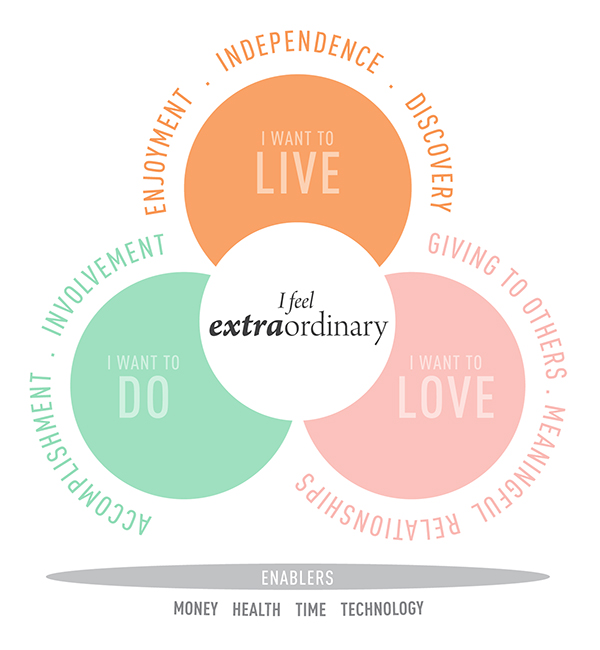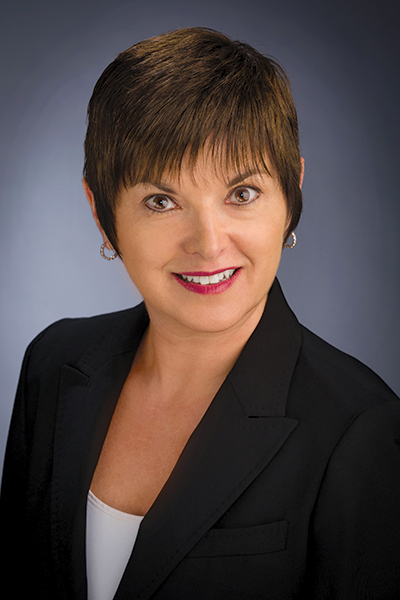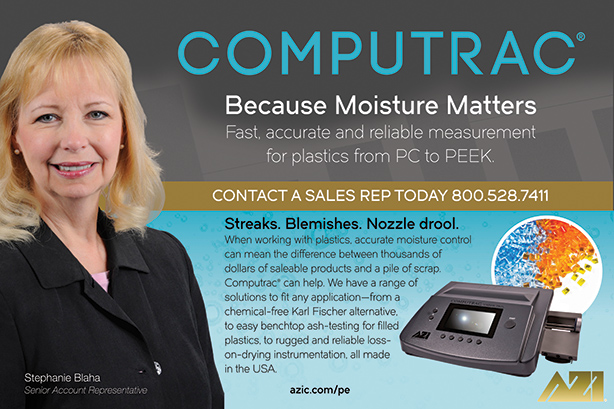
The Millennial Impact on Future Packaging Design
As a generation with broad life goals, Millennials are influencing the shape and style of packaging
Previous Article Next Article
By Robert Grace
The Millennial Impact on Future Packaging Design
As a generation with broad life goals, Millennials are influencing the shape and style of packaging
Previous Article Next Article
By Robert Grace
The Millennial Impact on Future Packaging Design
As a generation with broad life goals, Millennials are influencing the shape and style of packaging
Previous Article Next Article
By Robert Grace

Regarding the lifestyle needs of Millennials, research company Lextant identified three main drivers with seven key values supporting the core (this image and the article’s header image courtesy of Lextant).

Joseph Hotchkiss

Denise Greenwell

Product designers, packagers, and marketers all are looking for the golden key to unlock the mystery of the Millennials. This post-Baby Boomer generation already accounts for roughly one-quarter of the U.S. population, and is growing in both numbers and purchasing power. By 2018, Millennials’ annual spending is projected to reach well over $3 trillion globally, exceeding that of Boomers’, and they will account for up to 75% of the global workforce by 2025.1,2
Even defining the age range of Millennials can be tricky, with various suggestions being cited. For the purpose of this column we’ll consider them to be 18- to 34-year-olds, born between 1982 and 1998. Truly digital natives, Millennials pose interesting challenges for companies trying to capture their attention and command their purchasing loyalty. This has prompted keen interest by many to learn what drives them.
And much of this examination has taken place against the backdrop of a considerable amount of negative press, calling Millennials a “me generation”—self-centered, suffering from entitlement syndrome, and lacking work ethic. How much of it is true?
Here are some other questions that many have about Millennials:
- Why aren’t they brand-loyal, buying cars or houses, and getting married?
- Why are they buying local, obsessed with social media, flocking to cities, and intolerant of delay?
- Why do they need to have a say in everything, expect flexibility, and think their job should be fun?
The bottom line is that world around us is changing very rapidly—socially, culturally, and technologically—and Millennials are at the heart of a lot of this change, notes Mackenzie King, design research and insight translation director for Lextant in Columbus, Ohio. One thing is for sure, she suggests: their habits are reshaping how brands design and package their products.
The “Core Feeling” of Millennials
To better meet these needs, companies first much acquire a deeper understanding of the aspirations and motivations of these diverse individuals who happen to be grouped together because of their age. King suggests that to appeal to Millennials, product makers and brands need to “transition from selling a product to be consumed to providing an experience to be unlocked.”
Lextant, a research and design firm, studies such generational factors closely. In late 2014, it undertook a project to dig deeper, to try to find out what really makes Millennials tick. Lextant focused on qualitative rather than quantitative research by conducting in-depth three-hour interviews with 27 individuals aged between 20 and 30 years old. The purpose of “The Millennials Project” was to uncover insights that could serve as a foundational springboard for future exploration, King says.
Lextant found the core feeling for Millennials to be “I feel extraordinary.” They identified three main drivers—“I want to live; I want to love; I want to do”—with seven key values supporting the core—enjoyment, independence, discovery, giving to others, meaningful relationships, accomplishment, and involvement.
So what does all this mean to a product maker or package designer? Well, ponder this: What if a company empowered Millennials by allowing them to influence and direct the creation of new products? The co-creation process provides a platform for Millennials to express their needs and desires. Some firms are experimenting with this approach already.
Coca-Cola Co., for example, earlier this year rolled out a limited personalization campaign in the USA called “It’s Mine,” whereby consumers could go online and create their own, unique, computer-generated label designs for 12-ounce bottles of Diet Coke.
An “Experience”—Not Just a Product
Packaging Hall of Famer Joseph Hotchkiss, former director of the School of Packaging at Michigan State University and a professor emeritus at Cornell University, says he has spent most of his life working with 18- to 25-year-olds. Hotchkiss, who also previously headed MSU’s Center for Packaging Innovation & Sustainability, says consumers increasingly are impatient with poorly executed products and packaging, and that Millennials are “the least forgiving of all.”
Noting that they’re more sensitive than previous generations to over-packaging, today’s young buyers also have no great loyalty to brands. If a product disappoints, they move on. They also expect, and demand, good functionality, such as effective “reclosability” of drinks and food packaging.
Packagers, on the other hand, Hotchkiss suggests, are “usually good at protecting product, and pretty good at explaining how to use their product—but not so good when it comes to the packaging/user interface.” This is where there’s much room for improvement.
Echoing Lextant’s research finding, Hotchkiss says Millennials want an “experience,” not just a product. He mentions a YouTube video3 that shows how Google Store not only personalized a package it shipped to a young customer, but cleverly turned the unboxing of the various products itself into a fun, delightful jigsaw puzzle of an exercise. “This is what excites Millennials. This is where packaging needs to go to meet this group’s needs.”
Additionally, several experts say that brands and packagers need to integrate electronics into their packaging. Millennials “don’t think of the use of this as technology,” Hotchkiss says, “they think of it as life.”
“Smart” Packaging
Denise Greenwell, global market development manager for personal care and household care products for $7 billion molder Berry Plastics Corp., agrees that such so-called “smart packaging” will play an important role. It’s still emerging and hasn’t fully taken hold yet, but will provide vital traceability for manufacturers, as well as useful information for consumers. “This will really impact food markets, once it gets to an acceptable price point,” she says.
Many also are working to incorporate smart packaging into the pharmaceutical sector, to help improve safety and encourage better medication compliance by consumers.
Meanwhile, in Australia, the burger giant McDonald’s opted to inform and educate via its packaging. In an initiative called “Track my Macca’s,” the company rolled out an augmented-reality app that brought to life the “story” behind the customer’s sandwich. Users who scanned the burger box saw animations, infographics, and interactive elements on their smartphone about the food’s origins, including supply-chain data. Customers even can meet the farmer or baker that supplied the ingredients through a playful series of 3-D animations.
Berry Plastics’ Greenwell suggests, however, that other, broad societal changes also are impacting food and drink packaging. For example, the number of single-person U.S. households has soared from 13% in 1960 to 28% in 2014, and the number of family households with children has declined by 21% in that same period, she says. Millennials constitute a significant portion of these single-person households, but they also include widowers, divorcees, and empty-nesters.
This downsizing trend is driving demand for smaller-portion packets and more on-the-go, convenience-style packaging for food and drinks, and even for personal care and household products.
The single lifestyle, along with ubiquitous technology, also is spurring the use of fresh-food delivery services. This imposes its own set of challenges on packagers. They need to ensure food is delivered hot or cold (as desired), doesn’t spoil if left sitting for hours on a doorstep, and yet is not over-packaged.
“Design with Millennials”
Few things irk Millennials more than wasteful over-packaging or badly executed packaging that poorly serves its purpose. Greenwell concurs with others that Millennials generally are “more conscientious and more aware” of sustainability issues, and of where things are sourced from—but she also cautioned against viewing Millennials as one monolithic group, saying, “Nothing could be further from the truth.”
The desire for user-friendly packaging of, say, an aspirin bottle that has a soft-touch grip and is easy to open, is valued as much by older consumers as by Millennials. In fact, Greenwell sees a major opportunity for food companies to target Baby Boomers, since such firms currently allocate less than 5% of their advertising budgets to members of that generation.
As usual, there’s no one, easy answer to effectively address the market needs and desires of any given demographic group. For her part, Lextant’s Mackenzie King says, “Don’t design for Millennials, design with Millennials, and engage them with stories.”
References
1.“Are Banks Ready for the Next Generation Customer?” Oracle Financial Services/EFMA survey report. Sept. 2010. www.oracle.com/us/industries/financial-services/gen-y-survey-report-165297.pdf downloaded Apr. 29, 2016.
2.Multiple sources; for example, see: M. Winograd and M. Hais, “How Millennials Could Upend Wall Street and Corporate America.” The Brookings Institute. May 2014. www.brookings.edu/~ /media/research/files/papers/2014/05/millennials-wall-st/brookings_winogradfinal.pdf downloaded Apr. 29, 2016.
3.“The Ultimate Google Unboxing.” YouTube. Nov. 25, 2015. bit.ly/google_unboxing accessed Apr. 28, 2016.
About the author… A 35-year B2B media veteran, Robert Grace was the founding editor of Crain’s Plastics News in 1989. An ardent design advocate, he left Crain in 2014 to found RC Grace LLC (www.rcgrace.com), a business consultancy that helps companies find business partners and enhance their market presence.


